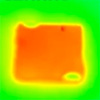| Apr 11, 2025 |
Scientists developed a plasma-based process for the synthesis of photothermal materials for water purification, and desalination.
(Nanowerk News) The conversion of solar energy into thermal energy is an ever-evolving technology that leads to numerous applications. A recent achievement in the laboratory of Professor My Ali El Khakani at the Institut national de la recherche scientifique (INRS) represents a significant contribution to the field.
|
|
Professor El Khakani, specializing in plasma-laser processes for the development of nanostructured materials, and his team at the INRS Energy Materials and Telecommunications Research Centre have developed a novel photothermal material that directly converts sunlight into heat with unprecedented efficiency. The results of their work have been published in Scientific Reports (“High photothermal conversion efficiency of RF sputtered Ti4O7 Magnéli phase thin films and its linear correlation with light absorption capacity”).
|
|
For several decades, stoichiometric titanium oxides have been known for their exceptional photocatalytic properties. A class known as “Magneli Phases”, consists of titanium dioxides with sub-stoichiometric compositions (i.e., with oxygen atoms vacancies in the lattice). Among these Magneli phases, the Ti4O7 form is the most attractive composition owing to its high electrical conductivity, chemical stability, and unique catalytic properties.
|
|
However, the photothermal properties of Ti4O7 have only been explored in the last few years. The recent work of Professor El Khakani and his team members has revealed the enormous potential of Ti4O7 thin films for super-efficient photothermal conversion.
|
Pushing the limits of materials
|
|
One of the main limitations for the potential use of Ti4O7 lays in the synthesis process and the final form of the obtained material.
|
|
“Ti4O7 is classically synthesized by thermal reduction methods under the powdered form. These methods do not generally allow the synthesis of the pure phase of the Ti4O7 material and/or enable the fine control of its composition, morphology, and nanostructure,” says Loick Pichon, a PhD student at INRS and the first author of the publication. “These thermal reduction methods rather result in mixed phases of several chemical compositions, thus limiting access to all the potentialities of the pure material, particularly its electrical conductivity.” Furthermore, the synthesized powder is generally pressed to form pellets, limiting thus the size of final electrodes to a few centimeters at most”.
|
|
This is where Professor El Khakani and his team decided to use a plasma deposition technique known as “magnetron sputtering” (or RF-magnetron plasma) to deposit thin coatings of this material. This thin film deposition technique is commonly used in the semiconductor industry.
|
|
“The Ti4O7 coating thus deposited (films of a few hundred nanometers thick) completely changes the surface properties of the substrate, which can otherwise be quite large or of different natures (metal plates, silicon wafers, or glass plates),” explains Professor El Khakani.
|
A wide range of applications
|
|
By enabling the controlled deposition of Ti4O7 films onto various substrates, INRS researchers pave the way towards multiple applications. Rightly so, Ti4O7 coatings will be used to manufacture high-performance anodes for the decontamination of water containing persistent pollutants.
|
|
These corrosion-resistant and highly conductive electrodes are also highly sought after for electrochemical processes used in the production of hydrogen and ammonia, two important economic sectors in Quebec. With its exceptional photothermal conversion capacity, this type of coating is also relevant for manufacturing smart heating windows, a significant asset in terms of economy and energy efficiency.
|

